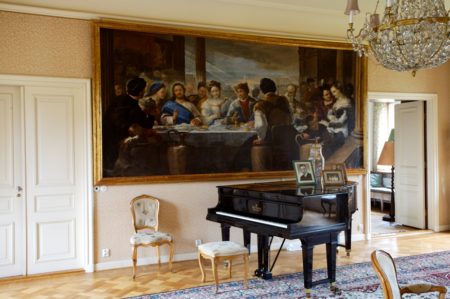Ellinge Castle’s history
Ellinge Castle has a long history; as early as the 12th century in the early Middle Ages, the location of Ellinge and its defensive fortress are mentioned. The first owner of Ellinge Castle was the Dane Erland Galen, registered as the owner in the Danish archives in the early 13th century.
After many years of changes between Danish and Swedish families, the castle was inherited by the Wrangel af Sauss family, who did not reside in the castle but instead built the Wrangel Villa outside the castle’s moat in 1897. After the Wrangel family was forced to sell the castle in 1950, it was purchased by the Wehtje family from Malmö. Ernst Wehtje and his wife Brita renovated the castle between 1954 and 1956. Hans-Christian Wehtje, son of Ernst, was the owner from 1956 and developed the agricultural activities on the estate.
Today, Hans-Christian’s son, Mikael Wehtje, has been managing Ellinge Castle since 1993. The current operations include agriculture, forestry, energy production, and the rental of residences. Since 2008, the castle has hosted events such as conferences, weddings, and private parties. Ellinge Castle has not only preserved its historical character but has also adapted to be a venue for contemporary events and gatherings. All with the hope that Ellinge Castle will stand for another hundred years.





